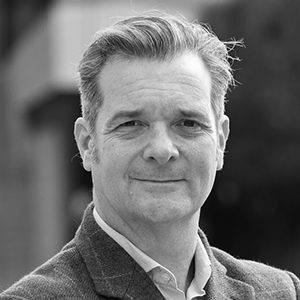
IESE Insight
Crossing the line: When entrepreneurial storytelling spirals into outright fraud
In the world of startups, there’s a fine line between envisioning the future and lying to the world.
A deluge of high-profile frauds in recent years has tainted entrepreneurship. There was Theranos, the medtech startup with a groundbreaking new blood test that sounded, and was, too good to be true. Or Sam Bankman-Fried, the darling of the cryptocurrency exchange, FTX, and the future of banking for many — until he was convicted of fraud and conspiracy to commit money laundering. And then there was the Fyre Festival, the luxury Bahamian answer to Coachella that ended in a fight for survival and a flood of tears.
You could be forgiven for thinking that entrepreneurship attracts narcissists, liars, con artists and pathological risk takers.
Yet a recent paper by IESE’s Yuliya Snihur and Llewellyn D.W. Thomas, with Raghu Garud and Nelson Phillips, suggests that spinning yarns is a process that can happen even to those with the best intentions.
Their paper also highlights that entrepreneurial deception isn’t a solo act. Stakeholders, including investors, business partners and employees, frequently play a role in maintaining the myth. Equally, they have a role in breaking it.
Stage 1: It starts with a story
Entrepreneurs must be powerful storytellers to win early-stage support.
Investors want to know that startup leaders are sure of their vision and that they can see it through. In tech, where new inventions and business models are often unproven, entrepreneurs need to paint an inspiring and convincing picture of their revolutionary new idea to get buy-in.
But disrupting industries is risky by nature. Startups have a high rate of failure, and entrepreneurs can’t know all the concrete details in advance. As a result, most founders frame their company’s future in terms that are ambitious but vague, while downplaying risks.
Early backers often make their choice based on an entrepreneur’s credibility, with personal presentation, office premises, partnerships with established entities and other symbolic actions forming an important part of the storytelling.
Even something as inconsequential as a hairstyle can be harnessed for effect. Sam Bankman-Fried’s notoriously scruffy hair and clothes were part of his brand, giving the impression he was someone who was thinking beyond monetary considerations. An FTX advertisement featuring Bankman-Fried, supermodel Gisele Bundchen and the tagline “I want to make the biggest global impact for good” further cemented his maverick reputation.
We’ve all seen how that worked out. What starts as simply aggressive marketing, or managing first impressions, can quickly become the seeds of deceit. And the more ambitious the initial story the entrepreneur sells, the greater the liability.
Stage 2: The slippery slope of deception
Not every great idea pans out. When expectations don’t meet reality, entrepreneurs may be tempted to use their charisma and talent with narrative to blur the truth. This is when the bold initial storytelling can quickly come under fire as investors, customers, business partners and regulators start asking concrete questions and demand interim proof that the groundbreaking product or innovative business model works.
At this stage, entrepreneurs can no longer keep their communications vague, and some founders resort to omitting, embellishing, fabricating or misrepresenting the truth. Once entrepreneurs have publicly committed to a course of action and attracted key audiences and investors with an ambitious vision, it’s much harder to pivot to a more modest proposal.
In the case of Theranos, such misrepresentations were potentially deadly: When Theranos blood tests were rolled out at Walgreens in Arizona, false positives and negatives put hundreds of patients at risk of failing to treat a dangerous condition — or treating one they didn’t have. Theranos founder Elizabeth Holmes let the tests go ahead, knowing that her machines were deficient.
The desire to meet expectations can also lead to doubling down on lies and even adding more in the form of “stretch goals” — further escalations of promises to mask the original deceit. Employees at Fyre Festival, for example, have reported that founder Billy McFarland began promising ever more fanciful luxury accommodation, while his team lacked the resources to deliver the villas that had already been sold to festival goers.
Employees often support or enable such fabrications, sometimes from fear of rocking the boat, sometimes because they are themselves emotionally and financially invested in the vision. Some investors might even encourage the entrepreneur to “fake it till you make it” — a popular ethos in Silicon Valley, where overpromising is expected and part of the culture.
But when entrepreneurial deception is uncovered, the same stakeholders who turned a blind eye or were complicit are usually keen to place all the blame on the entrepreneur, reducing a culture of collusion and wishful thinking to a single bad apple.
Stage 3: Losing legitimacy
“All I did was try to build a company. Failure isn’t the same thing as fraud.”
Entrepreneurs frequently use some variation of this line when the truth comes out and they are faced with the legal, regulatory or financial consequences of their actions. The line between failure and fraud is, at times, razor thin.
Audiences, including investors, business partners and employees, can play an active role in drawing that line by staying alert, asking the hard questions, doing due diligence and not getting swept up in the initial optimistic framing.
This new paper offers a vital counterbalance to overly hopeful narratives in entrepreneurship. By understanding how entrepreneurial deception works, we can reassess the culture of overambitious claims that start the cycle.
Entrepreneurship can have a transformative impact on industries and society, bringing about economic and social change. There is a dark side where con artists can thrive, and a gray zone where even well-meaning entrepreneurs fall victim to the culture of hype and overpromising. Building a cleaner entrepreneurial culture is a job for everyone.
About the research
The authors propose a new theoretical model that explains the process of entrepreneurial deception, drawing on the literature around framing endeavors and temporal construal.


